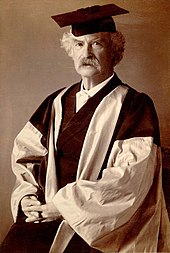Source(google.com.pk)
Windows Black Wallpaper Biography
Black graduated from Harvard College in 1959 and received a Ph.D. in applied mathematics from Harvard University in 1964. He was initially expelled from the PhD program due to his inability to settle on a thesis topic, having switched from physics to mathematics, then to computers and artificial intelligence. Black joined the consultancy Bolt, Beranek and Newman, working on a system for artificial intelligence. He spent a summer developing his ideas at the RAND corporation. He became a student of MIT professor Marvin Minsky,[3][4] and was later able to submit his research for completion of the Harvard PhD.
Black joined Arthur D. Little, where he was first exposed to economic and financial consulting and where he met his future collaborator Jack Treynor. In 1971, he began to work at the University of Chicago. He later left the University of Chicago to work at the MIT Sloan School of Management. In 1984, he joined Goldman Sachs.
[edit]Economic career
Black began thinking seriously about monetary policy around 1970 and found, at this time, that the big debate in this field was between Keynesians and monetarists. The Keynesians (under the leadership, at that moment, of Franco Modigliani) believe there is a natural tendency of the credit markets toward instability, toward boom and bust, and they assign to both monetary and fiscal policy roles in dampening down this cycle, working toward the goal of smooth sustainable growth. In the Keynesian view, central bankers have to have discretionary powers to fulfill their role properly. Monetarists, under the leadership of Milton Friedman, believe that discretionary central banking is the problem, not the solution. Friedman believed that the growth of the money supply could and should be set at a constant rate, say 3% a year, to accommodate predictable growth in real GDP.
On the basis of the capital asset pricing model, Black concluded that discretionary monetary policy could not do the good that Keynesians wanted it to do. But he also concluded that it could not do the harm monetarists feared it would do. Black said in a letter to Friedman, in January 1972:
In the U.S. economy, much of the public debt is in the form of Treasury bills. Each week, some of these bills mature, and new bills are sold. If the Federal Reserve System tries to inject money into the private sector, the private sector will simply turn around and exchange its money for Treasury bills at the next auction. If the Federal Reserve withdraws money, the private sector will allow some of its Treasury bills to mature without replacing them.
In 1973, Black, along with Myron Scholes, published the paper 'The Pricing of Options and Corporate Liabilities' in 'The Journal of Political Economy'.[5] This was his most famous work and included the Black–Scholes equation.
In March 1976, Black proposed that human capital and business have "ups and downs that are largely unpredictable [...] because of basic uncertainty about what people will want in the future and about what the economy will be able to produce in the future. If future tastes and technology were known, profits and wages would grow smoothly and surely over time." A boom is a period when technology matches well with demand. A bust is a period of mismatch. This view made Black an early contributor to real business cycle theory.
[edit]Illness and death
In early 1994, Black was diagnosed with throat cancer. Surgery at first appeared successful, and Black was well enough to attend the annual meeting of the International Association of Financial Engineers that October, where he received their award as Financial Engineer of the Year. But the cancer returned, and Black died in August 1995.
[edit]Posthumous recognition
The Nobel Prize is not given posthumously, so it was not awarded to Black in 1997 when his co-author Myron Scholes received the honor for their landmark work on option pricing along with Robert C. Merton, another pioneer in the development of valuation of stock options. In the announcement of the award that year, the Nobel committee prominently mentioned Black's key role.
Black has also received recognition as the co-author of the Black–Derman–Toy interest rate derivatives model, which was developed for in-house use by Goldman Sachs in the 1980s but eventually published.












Windows Black Wallpaper Biography
Black graduated from Harvard College in 1959 and received a Ph.D. in applied mathematics from Harvard University in 1964. He was initially expelled from the PhD program due to his inability to settle on a thesis topic, having switched from physics to mathematics, then to computers and artificial intelligence. Black joined the consultancy Bolt, Beranek and Newman, working on a system for artificial intelligence. He spent a summer developing his ideas at the RAND corporation. He became a student of MIT professor Marvin Minsky,[3][4] and was later able to submit his research for completion of the Harvard PhD.
Black joined Arthur D. Little, where he was first exposed to economic and financial consulting and where he met his future collaborator Jack Treynor. In 1971, he began to work at the University of Chicago. He later left the University of Chicago to work at the MIT Sloan School of Management. In 1984, he joined Goldman Sachs.
[edit]Economic career
Black began thinking seriously about monetary policy around 1970 and found, at this time, that the big debate in this field was between Keynesians and monetarists. The Keynesians (under the leadership, at that moment, of Franco Modigliani) believe there is a natural tendency of the credit markets toward instability, toward boom and bust, and they assign to both monetary and fiscal policy roles in dampening down this cycle, working toward the goal of smooth sustainable growth. In the Keynesian view, central bankers have to have discretionary powers to fulfill their role properly. Monetarists, under the leadership of Milton Friedman, believe that discretionary central banking is the problem, not the solution. Friedman believed that the growth of the money supply could and should be set at a constant rate, say 3% a year, to accommodate predictable growth in real GDP.
On the basis of the capital asset pricing model, Black concluded that discretionary monetary policy could not do the good that Keynesians wanted it to do. But he also concluded that it could not do the harm monetarists feared it would do. Black said in a letter to Friedman, in January 1972:
In the U.S. economy, much of the public debt is in the form of Treasury bills. Each week, some of these bills mature, and new bills are sold. If the Federal Reserve System tries to inject money into the private sector, the private sector will simply turn around and exchange its money for Treasury bills at the next auction. If the Federal Reserve withdraws money, the private sector will allow some of its Treasury bills to mature without replacing them.
In 1973, Black, along with Myron Scholes, published the paper 'The Pricing of Options and Corporate Liabilities' in 'The Journal of Political Economy'.[5] This was his most famous work and included the Black–Scholes equation.
In March 1976, Black proposed that human capital and business have "ups and downs that are largely unpredictable [...] because of basic uncertainty about what people will want in the future and about what the economy will be able to produce in the future. If future tastes and technology were known, profits and wages would grow smoothly and surely over time." A boom is a period when technology matches well with demand. A bust is a period of mismatch. This view made Black an early contributor to real business cycle theory.
[edit]Illness and death
In early 1994, Black was diagnosed with throat cancer. Surgery at first appeared successful, and Black was well enough to attend the annual meeting of the International Association of Financial Engineers that October, where he received their award as Financial Engineer of the Year. But the cancer returned, and Black died in August 1995.
[edit]Posthumous recognition
The Nobel Prize is not given posthumously, so it was not awarded to Black in 1997 when his co-author Myron Scholes received the honor for their landmark work on option pricing along with Robert C. Merton, another pioneer in the development of valuation of stock options. In the announcement of the award that year, the Nobel committee prominently mentioned Black's key role.
Black has also received recognition as the co-author of the Black–Derman–Toy interest rate derivatives model, which was developed for in-house use by Goldman Sachs in the 1980s but eventually published.
Windows Black Wallpaper

Windows Black Wallpaper

Windows Black Wallpaper

Windows Black Wallpaper

Windows Black Wallpaper

Windows Black Wallpaper

Windows Black Wallpaper

Windows Black Wallpaper

Windows Black Wallpaper

Windows Black Wallpaper

Windows Black Wallpaper

Windows Black Wallpaper

Windows Black Wallpaper
No comments:
Post a Comment